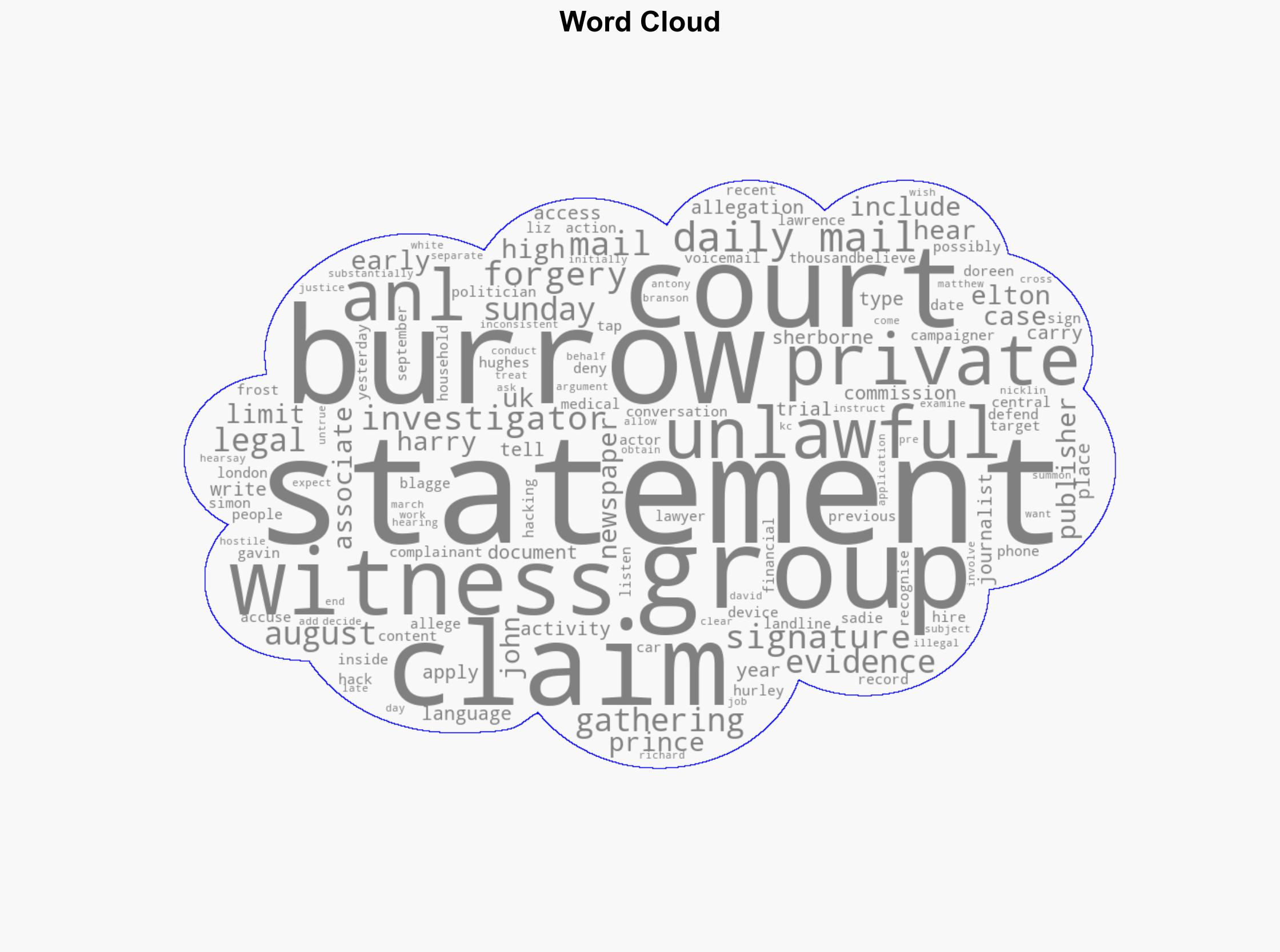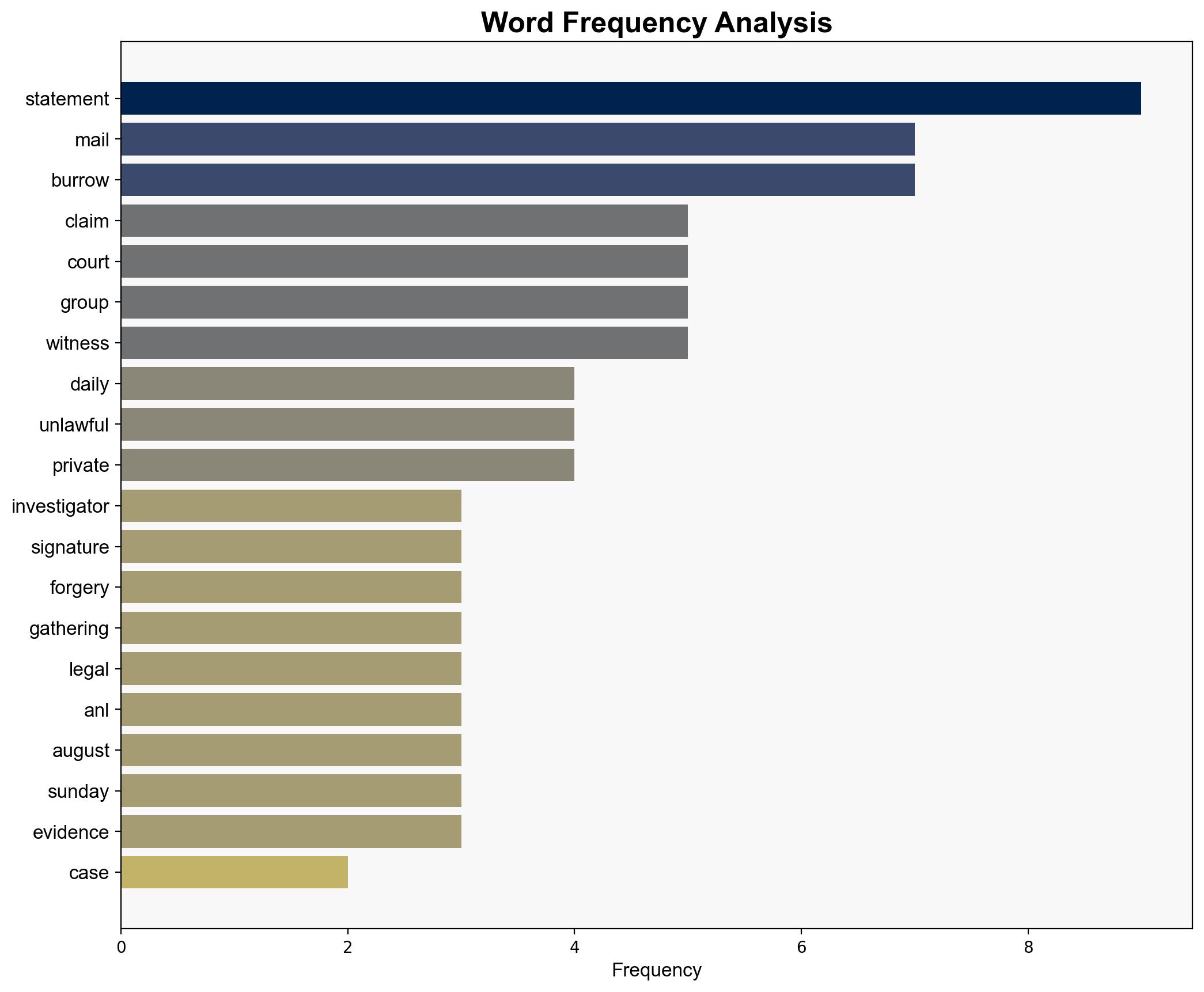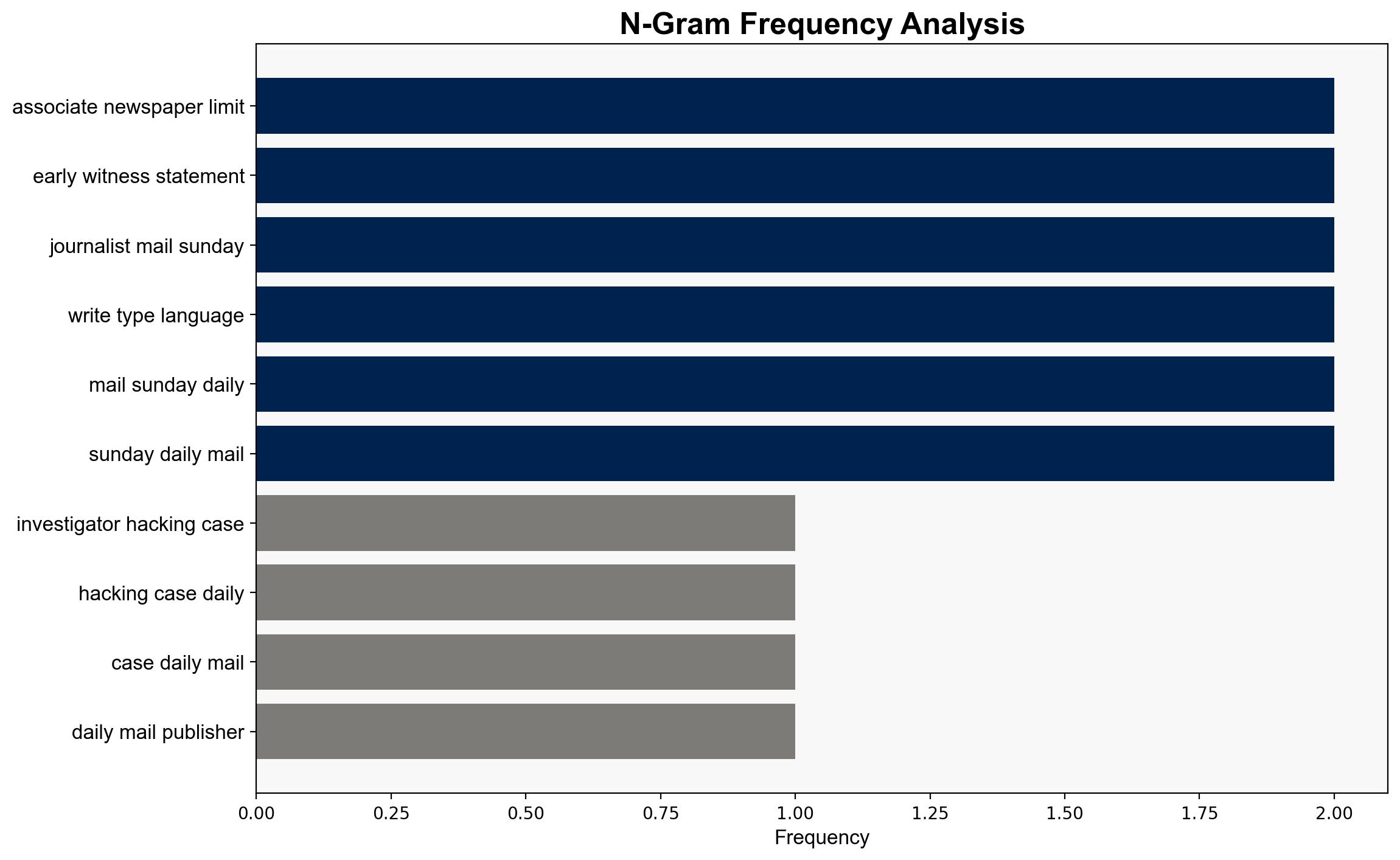Investigator in hacking case against Daily Mail publisher claims statement signature is a forgery – Independent.ie
Published on: 2025-11-12
AI-powered OSINT brief from verified open sources. Automated NLP signal extraction with human verification. See our Methodology and Why WorldWideWatchers.
Intelligence Report: Investigator in hacking case against Daily Mail publisher claims statement signature is a forgery – Independent.ie
1. BLUF (Bottom Line Up Front)
With moderate confidence, the most supported hypothesis is that the signature on the statement is indeed a forgery, potentially orchestrated to undermine the credibility of the allegations against the Daily Mail publisher. Strategic recommendations include conducting a forensic analysis of the signature and monitoring the legal proceedings for further developments.
2. Competing Hypotheses
Hypothesis 1: The signature on the statement is a forgery, intended to discredit the investigator and weaken the case against the Daily Mail publisher.
Hypothesis 2: The signature is genuine, and the claim of forgery is a tactic by the defense to create doubt and delay proceedings.
Hypothesis 1 is more likely due to the investigator’s assertion of forgery and the context of high-profile individuals involved, suggesting potential motives for forgery to protect reputations.
3. Key Assumptions and Red Flags
Assumptions: It is assumed that the investigator has no incentive to fabricate the forgery claim. The legal system will impartially evaluate the evidence.
Red Flags: The timing of the forgery claim, coinciding with the legal proceedings, raises suspicion. The involvement of high-profile individuals increases the stakes and potential for manipulation.
Deception Indicators: The claim of forgery could be a strategic move by either party to influence public perception or legal outcomes.
4. Implications and Strategic Risks
The case could set a precedent for future legal actions involving media organizations and privacy violations. If the forgery claim is substantiated, it may lead to increased scrutiny of journalistic practices and potential regulatory changes. Conversely, if proven false, it could damage the credibility of the complainants and embolden media entities to continue aggressive information-gathering tactics.
5. Recommendations and Outlook
- Conduct a forensic analysis of the signature to establish authenticity.
- Monitor the legal proceedings for developments that could impact media regulation.
- Engage with cybersecurity experts to assess vulnerabilities in information handling by media organizations.
- Best-case scenario: The forgery claim is resolved swiftly, leading to a fair trial and potential reforms in media practices.
- Worst-case scenario: Prolonged legal battles and public mistrust in media and legal institutions.
- Most-likely scenario: The case proceeds with heightened public attention, influencing future legal and media landscapes.
6. Key Individuals and Entities
Gavin Burrow, Prince Harry, Elton John, Liz Hurley, Sadie Frost, Doreen Lawrence, Simon Hughes, Richard Branson, Antony White KC, David Sherborne, Justice Matthew Nicklin.
7. Thematic Tags
Cybersecurity, Media Ethics, Legal Proceedings, Privacy Violations
Structured Analytic Techniques Applied
- Adversarial Threat Simulation: Model and simulate actions of cyber adversaries to anticipate vulnerabilities and improve resilience.
- Indicators Development: Detect and monitor behavioral or technical anomalies across systems for early threat detection.
- Bayesian Scenario Modeling: Quantify uncertainty and predict cyberattack pathways using probabilistic inference.
Explore more:
Cybersecurity Briefs ·
Daily Summary ·
Methodology





